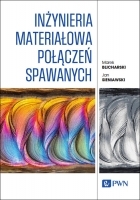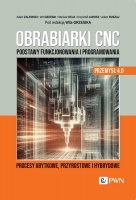Monitorowanie ruchu kończyny górnej w kontekście gier rehabilitacyjnych *
Monitoring the movement of the upper limb in the context of rehabilitation games
Mechanik nr 07/2018 - Nowe technologie
STRESZCZENIE: Rejestrowanie ruchu kończyny górnej w czasie rzeczywistym jest niezbędne do przygotowania interaktywnych metod wspomagania procesu odzyskiwania jej sprawności ruchowej. Tego typu programy komputerowe często wykorzystują środowiska trójwymiarowe i techniki rzeczywistości wirtualnej. Rejestracja ruchu może być realizowana z użyciem dostępnych na rynku kontrolerów, przygotowywanych na potrzeby gier komputerowych, co ułatwia tworzenie aplikacji wspomagających proces rehabilitacji. Wadą takiego podejścia są znaczące ograniczenia możliwości rejestracji ruchu, zwłaszcza ruchu poszczególnych członów kończyny górnej. Rozwiązaniem może być kontroler przygotowany specjalnie na potrzeby rehabilitacji.
SŁOWA KLUCZOWE: systemy pomiarowe, rzeczywistość wirtualna, wspomaganie rehabilitacji
ABSTRACT: Registration of the upper limb movement in real time is necessary to prepare interactive methods to support the recovery process of the upper limb. These types of computer programs often use three-dimensional environments and virtual reality techniques. Traffic registration can be carried out using commercially available controllers prepared for the needs of computer games, which facilitates the creation of applications supporting the rehabilitation process. The disadvantage of this approach are significant limitations in the possibilities of motion registration, in particular the movement of individual upper limb members. The solution may be to prepare a controller dedicated to the needs of therehabilitation.
KEYWORDS: measurement systems, virtual reality, rehabilitation support
BIBLIOGRAFIA / BIBLIOGRAPHY:
- Kosinski R.J. “A literature review on reaction time”. South Carolina: Clemson University, 2008.
- Salcudean S., Ku S., Bell G. “Performance measurement in scaled teleoperation for microsurgery”. Lecture Notes in Computer Science. Vol. 1205. Springer, 1997: s. 789–798.
- Wagner C., Stylopoulos N., Howe R.D. “The role of force feedback in surgery: analysis of blunt dissection”. Proceedings of the 10th symposium on haptic interfaces for virtual environments and teleoperator systems. 2002: s. 68–74.
- Zandsteeg C.J., Bruijnen D.J.H., van de Molengraft M.J.G. “Haptic tele-operation system control design for the ultrasound task: A loop-shaping approach”. Mechatronics. 20 (2010): s. 767–777.
- Euijung Yang, Dorneich M.C. “The Emotional, Cognitive, Physiological, and Performance Effects of Variable Time Delay in Robotic Teleoperation”. International Journal of Social Robotics. 9, 4 (2017): s. 491–508.
- Grabowski A. „Projekt dwuramiennego robota sterowanego przez teleoperatora z wykorzystaniem technik rzeczywistości wirtualnej”. Napędy i Sterowanie. 226 (2018): s. 46–50.
- Keshner E.A. “Virtual reality and physical rehabilitation: a new toy or a new research and rehabilitation tool?”. Journal of Neuroengineering and Rehabilitation. 1(1):8 (2004).
- Weiss P.L., Jessel A.S. “Virtual reality applications to work”. Work. 11, 3 (1998): s. 277–293.
- Sveistrup H. “Motor rehabilitation using virtual reality”. Journal of Neuroengineering and Rehabilitation. 1, 1 (2004): s. 10.
DOI: https://doi.org/10.17814/mechanik.2018.7.69
* Artykuł recenzowany























